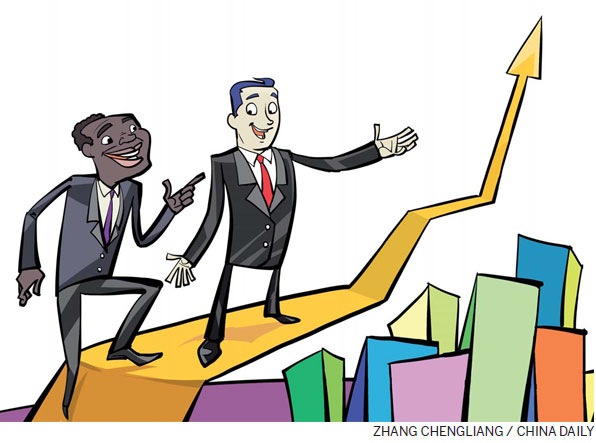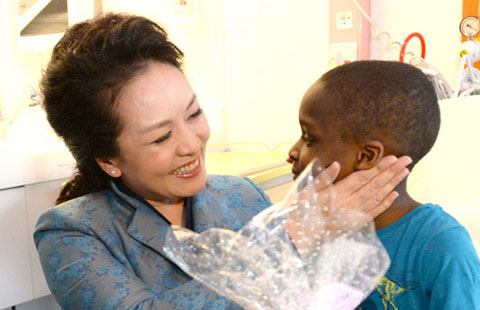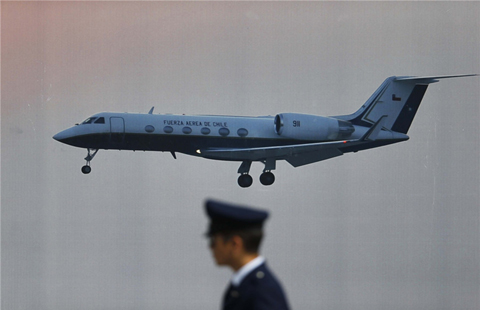

Revised methods in keeping track of Chinese financial contributions to Africa will shed more light
A report published last year on Chinese aid and development in Africa revealed the huge amounts China has contributed to projects on the continent.
The report was published by the research initiative AidData and was widely reported in the mainstream media. The $75 billion that China has spent in Africa in the past 10 years was interpreted as a sign of China's attempts to cement partnerships and establish allies among African countries. The British newspaper The Guardian said the report pointed to "Beijing's escalating soft power 'charm offensive' to secure political and economic clout on the continent".
Especially interesting was the report's conclusion that China had contributed to fewer mining projects than to projects in health, education and social infrastructure. Examples of these included a malaria prevention center, a school for visual arts and an opera house, as well as doctor and teacher exchanges. The Guardian took these examples as evidence of an increasingly strong geopolitical agenda on China's part.
However, experts on China's role in Africa strongly criticized the report. Deborah Brautigam, professor and director of the International Development Program at Johns Hopkins University, said the figures in the report were misleading because the methodology relied largely on media reports of Chinese project financing, which are unreliable.
In a recent development, AidData has issued updates from its Tracking Chinese Development Finance in Africa data set. Acknowledging that last year's pilot project, which relied largely on media reports, was "inherently imperfect", the new methodology cross-checks media reports with data from official sources, NGO reports and scholarly articles.

AidData says it believes that there are certain conditions that make the refined methodology effective. The open-source nature of the data makes it possible for users to identify errors. The over-reliance on media reports, for which the previous report was criticized, is now complemented by other methods such as in-country fieldwork and outreach to personnel involved with specific projects.
This refinement in methodology means that more sources are now being used to establish the extent of Chinese financing in Africa. To better reflect the shift to a variety of sources, AidData has now changed the name of its methodology to Tracking Under-Reported Financial Flows.
The introduction to the new codebook clarifies that the original name for the methodology, Media-Based Data Collection, may have been misleading to critics who did not review the whole codebook. Although the initial report relied heavily on media reports, according to Charles Perla, an AidData project manager, these reports were not its only source.
"In fact, media reports are used only as a departure point, and are supplemented with case studies undertaken by scholars and non-governmental organizations, project inventories supplied through Chinese embassy websites, and grants and loan data published by recipient governments."
The new codebook and an explanation of the methodology can be downloaded at china.aiddata.org/TUFF_codebook.
Working with researchers at the College of William & Mary and Brigham Young University in the United States, AidData set out to document all known Chinese development finance projects in Africa from 2000 to 2012. The new release includes more than 100 new projects, and more than 130 updates to existing project records. AidData is confident the refined methodology will withstand scrutiny. The pilot project was subjected to a test referred to as a "ground-truthing approach", where researchers visited project sites in South Africa and Uganda to corroborate the figures compiled by AidData. This testing involved interviews with local recipients of financing and other stakeholders. The pilot, conducted by researchers at AidData, the University of Cape Town, Zhejiang University, the College of William & Mary, and Brigham Young University in collaboration with local sources, did find some new information that was used to amend and correct the TUFF data. However, by and large these researchers say that the interviews and site visits they conducted supported AidData's open-source data.
The writers acknowledge that there is as yet "no consensus" on how the flows of development finance from China to Africa can be tracked. They say this inability to follow the money in a new geopolitical environment marked by rapid shifts, flows and contra-flows is a weakness of traditional academic research that cannot keep up with the "rapidly changing global development finance architecture". However, it is important to find a way of keeping track of these flows, so African communities can better understand and engage with the influx of funding from China to make best use of the opportunities it offers.
Although these researchers acknowledge that the TUFF methodology is not flawless, they see it as a "fairly robust method of independent data collection". The differences between information gathered on the ground in South Africa and Uganda and that gathered through AidData's methodology were minor. The two sets of data diverged on details such as dates, contact information and similar items, while the larger, more significant items of scale, scope and sector of financial assistance remained largely the same.
The revisions to AidData's approach remind us that scientific methodologies are never perfect or complete. And while the media is playing an important role in bringing to attention the flows and contra-flows between China and Africa - especially by stimulating debate and interpreting these developments - media reports alone cannot serve as reliable empirical evidence.
For this reason, the new multi-source approach by AidData seems like a step in the right direction. By revising its methodology, AidData has also displayed a willingness to open their work up to scrutiny. It may be expected that in a new, rapidly changing area such as Chinese involvement in Africa, research methodologies will be looked at especially closely. AidData should be commended for undertaking this scrutiny itself, and for displaying a willingness to revise its findings. Ultimately such a collaborative effort such as its open-source project - as well as the contributions of subsequent critics of this work - can contribute to a better understanding of what has become one of the most important shifts in the global political economy of development and aid in Africa.
The author is a professor at the School of Journalism and Media Studies, Rhodes University, South Africa. The views do not necessarily reflect those of China Daily.
(China Daily Africa Weekly 03/28/2014 page12)








